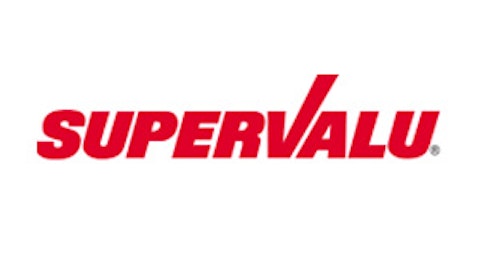Campbell’s Global Baking and Snacking, which includes Pepperidge Farm, were $568 million for the third quarter, an increase of 5% from a year ago. Did it steal sales away from Kroger? Maybe.
General Mills, Inc. (NYSE:GIS)‘s U.S. retail segment, which makes several products in competition with store brands, sales grew 2% to $2.66 billion. General Mills, Inc. (NYSE:GIS) Bakeries and Foodservices division (snacks and baked goods) sales were flat with the most recent net sales at $470 million, essentially matching year-ago results. It isn’t losing sales to Kroger brands either.
All things considered, it does not appear that Kroger really has converted customers to store brands over the name brands. The name brands are not necessarily growing, but they are not losing either.
The real competition
Kroger clearly is not attracting customers away from the manufacturer name brands. With more and more grocers cutting double coupon offerings, Kroger does not need to worry that the couponers will defect to another store to get that benefit. Instead customers will go to the stores with the best prices and most convenience, and that means the real competition for Kroger comes from big box stores like Wal-Mart Stores, Inc. (NYSE:WMT) or Target Corporation(NYSE:TGT). Kroger faces competition from these bigger chains that offer groceries at comparable prices, and draw in customers with the convenience of the other retail products and services that traditional grocers do not offer.
Traditional grocery chains have struggled in recent quarters as other stores become more specialized and diverse. Mass retailers such as Wal-Mart Stores, Inc. (NYSE:WMT), Target Corporation(NYSE:TGT), or SuperValu provide convenient one-stop shopping that grocers like Kroger and Safeway Inc. (NYSE:SWY) cannot compete with. But this is where Kroger stands apart from the competition. In some states the Kroger can compete against the big box stores with Smith’s Marketplace, Fry’s Marketplace, or Kroger Marketplace. The Marketplace models offer everything from eggs and milk to cocktail dresses and lawn mowers. The company is moving more and more to this model where applicable.
The grocery business is a difficult and complicated one. Not only are the companies in competition with other grocers, and the manufacturers, but they are vulnerable to the slightest shifts of the economy, and the weather. Nowhere is this seen better than at Wal-Mart. Groceries are a very important sector for Wal-Mart. Grocery sales accounted for 55% of its U.S. sales of $274.5 billion in the latest fiscal year.The company reported weaker-than-expected fiscal Q1 2014 results due to a 1.4% decline in US comparable store sales. Revenue of $114.19 billion fell shy of analyst estimates of $116.29 billion. The company attributed the decline in U.S. same store sales to weak consumer spending during the quarter primarily caused by payroll tax increase, and lower-than-expected price inflation of grocery items.
In the bag
In spite of Kroger’s claims, it just doesn’t look like the chain has the customer loyalty it says it has, nor does there appear to be a real impact made from a shift to store brands. Will customers return without the benefit or incentive of doubled coupons? Or will they flock to the one-stop shop, big-box stores? It is too soon to say. Sales may have been up in the first quarter, but it is the second-quarter results that will really tell the story.
Citing its stronger first-quarter results, Kroger increased its net earnings guidance for the year to a range of $2.73 to $2.80 per share, up from $2.71 to $2.79. Will the hopeful growth happen? Only time will tell. But for now, I’m a skeptic, and encourage investors to really take a look at the company’s claims before jumping too far in.
The article Can This Grocer’s Claims Be Trusted? originally appeared on Fool.com and is written by Erin McBride.
Erin McBride has no position in any stocks mentioned. The Motley Fool has no position in any of the stocks mentioned. Erin is a member of The Motley Fool Blog Network — entries represent the personal opinion of the blogger and are not formally edited.
Copyright © 1995 – 2013 The Motley Fool, LLC. All rights reserved. The Motley Fool has a disclosure policy.

